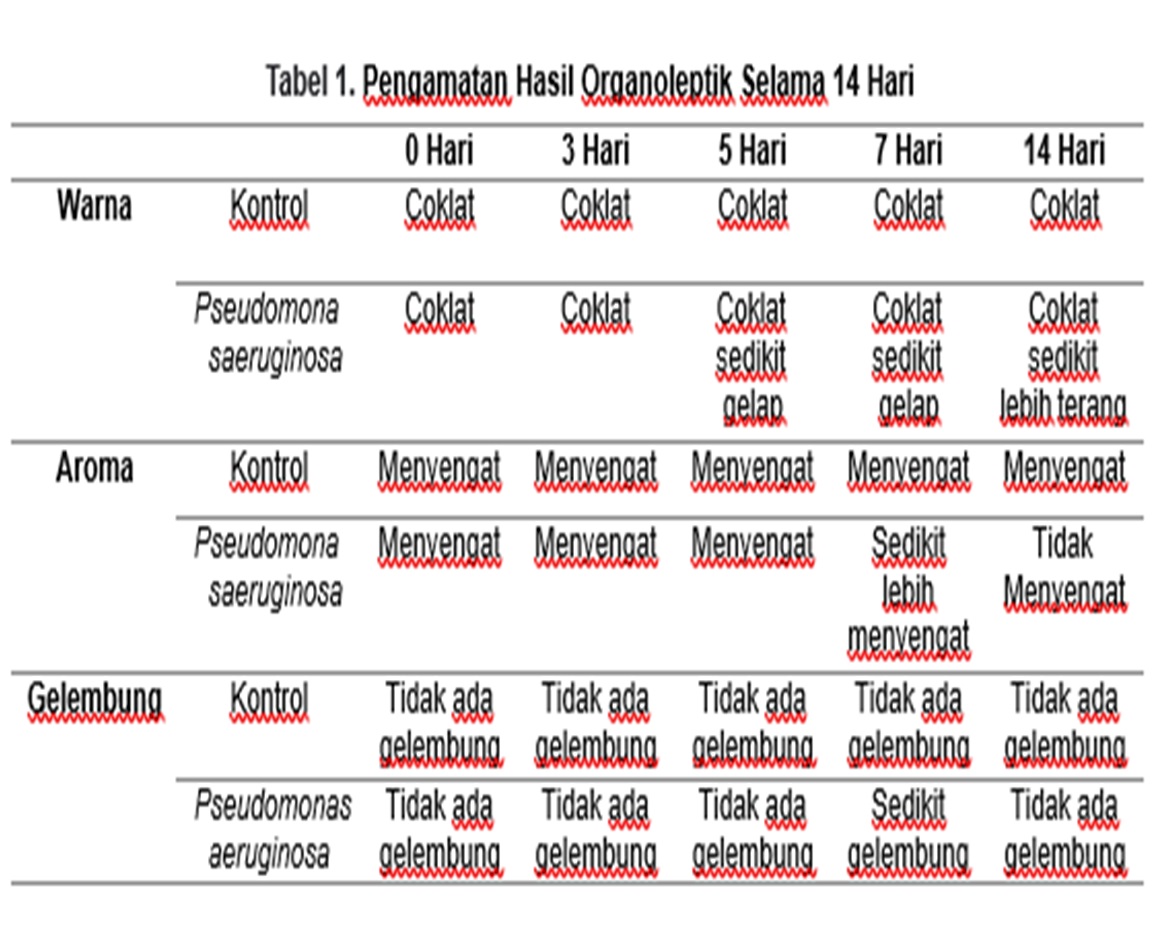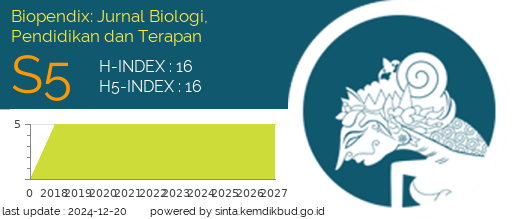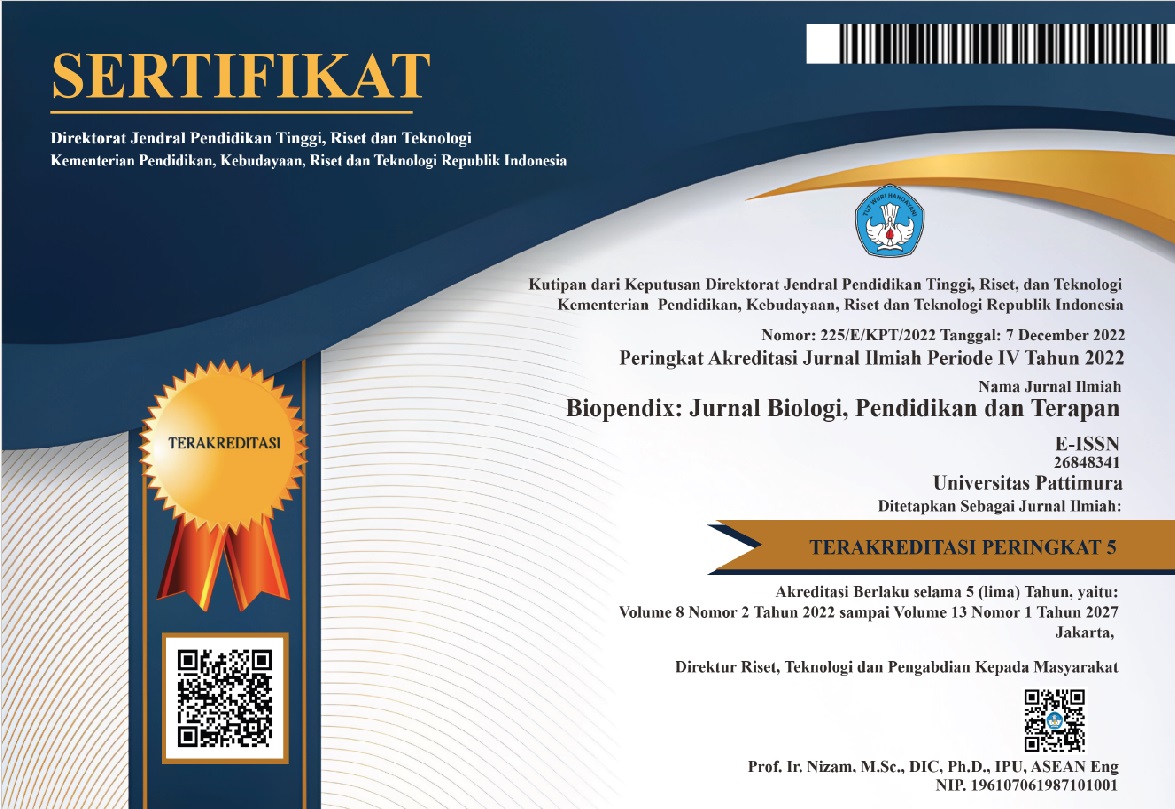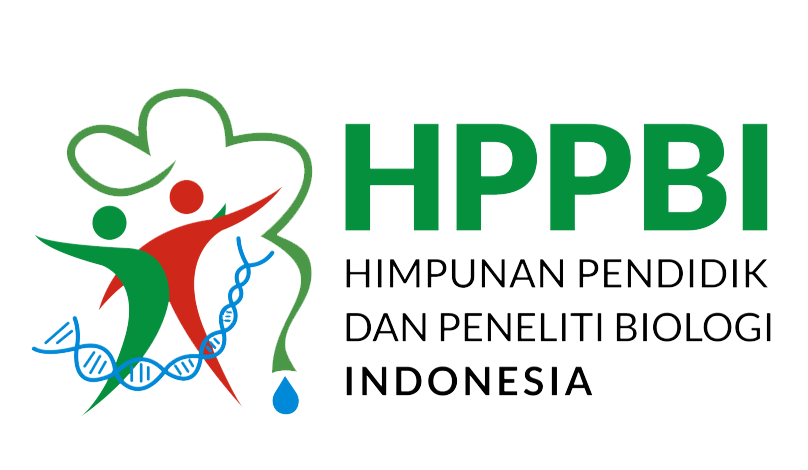EFEKTIVITAS BIOREMEDIASI MENGGUNAKAN BAKTERI Pseudomonas UNTUK MENURUNKAN KADAR COD LIMBAH ORGANIK DI PABRIK CINCAU KOTA MEDAN
Abstract
Background: Environmental pollution, especially due to organic waste from the food industry, is a serious problem in today's society. Waste from grass jelly factories contains high organic content which causes an increase in Chemical Oxygen Demand (COD) and has the potential to pollute water and ecosystems. This study aims to evaluate the effectiveness of Pseudomonas bacteria as a bioremediation agent in reducing COD levels in grass jelly factory waste.
Methods: The methods used consisted of observational and experimental, with testing carried out at the Microbiology Laboratory, State University of Medan.
Results: The results showed that after 14 days of treatment, COD levels decreased from 195.75 mg/L to 154.73 mg/L, indicating a decrease of around 20.9%.
Conclusion: This study concludes that Pseudomonas bacteria are effective in reducing organic pollution in grass jelly factory waste, so they have the potential to be applied in industrial waste management.
Downloads
References
Banin, M. M., Yahya, Y., & Nursyam, H. (2021). Pengolahan limbah cair industri pembekuan ikan kaca piring (Sillago sihama) menggunakan kombinasi bakteri Acinetobacter baumannii, Bacillus megaterium, Nitrococcus sp. dan Pseudomonas putida secara aerob. Journal of Tropical AgriFood, 3(1), 49.https://doi.org/10.35941/jtaf.3.1.2021.6119.49-62
Harahap, M. R., Amanda, L. D., & Matondang, A. H. (2022). Analisis Kadar Cod (Chemical Oxygen Demand) Dan Tss (Total Suspended Solid) Pada Limbah Cair Dengan Menggunakan Spektrofotometer Uv- Vis. Amina, 2(2), 79–83.
https://doi.org/10.22373/amina.v2i2. 772
Martini, S., Yuliwati, E., & Kharismadewi,
D. (2020). Pembuatan Teknologi Pengolahan Limbah Cair Industri. Jurnal Distilasi, 5(2), 26.https://doi.org/10.32502/jd.v5i2.3 030
Melati, I. (2020). Teknik Bioremediasi: Keuntungan, Keterbatasan Dan Prospek Riset. Prosiding Seminar Biotik Rahayu 2005, 272–286.
Ramayanti D., Ullil A. (2019). Analisis Parameter COD (Chemical Oxygen Demand) dan pH (Potential Hydrogen) Limbah Cair di PT. Pupuk Iskandar Muda (PT. PIM) Lhokseumawe. Jurnal Kimia Sains dan Terapan, 1 (1), 16-21.
Rasmadita Dewi, S., Envirotek, W., & Sulastri, A. (2023). Bioremediasi Tanah Tercemar Limbah Oli Bekas Dengan Metode Composting. Jurnal Envirotek, 15(2), 149–154. https://doi.org/10.33005/envirotek.v1 5i2.153
Riwanda, A., Mayasari, U., dan Rasyidah. (2024). Perbandingan Bakteri Pseudomonas putida Dan Bacillus cereus Dalam Menurunkan Kadar Cod Bod Pada Limbah Cair Pabrik Kelapa Sawit. Jurnal Biogenerasi, 9(1): 716-723.
Syarifuddin, A., Yuliastuti, F., & Pradani, M. P. K. (2020). Potensi Cemaran Bakteri Escherichia coli Pada Limbah Cair Rumah Potong Ayam (Rpa) Terhadap Lingkungan Di Kota Magelang. Jurnal Kesehatan, 13(1), 46–53. https://doi.org/10.23917/jk.v13i1.111 01

Copyright (c) 2024 agnes sebayang

This work is licensed under a Creative Commons Attribution-ShareAlike 4.0 International License.
Authors who publish with BIOPENDIX: Jurnal Biologi, Pendidikan dan Terapan agree to the following terms:
- Authors retain copyright and grant the journal right of first publication with the work simultaneously licensed under Creative Commons Atribution-ShareAlike 4.0 International License (CC BY-SA 4.0) that allows others to share the work with an acknowledgment of the work's authorship and initial publication in this journal.
- Authors are able to enter into separate, additional contractual arrangements for the non-exclusive distribution of the journal's published version of the work (e.g., post it to an institutional repository or publish it in a book), with an acknowledgment of its initial publication in this journal.
- Authors are permitted and encouraged to post their work online (e.g., in institutional repositories or on their website) prior to and during the submission process, as it can lead to productive exchanges, as well as earlier and greater citation of published work.




 2
2






